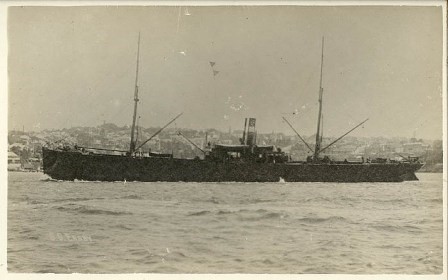An island of history and nature
Access to the island is by a 13 kilometre air or sea journey from Mallacoota, but the area is very exposed to bad weather and trips are often cancelled. The trip out is an experience in itself with the prospect of seeing whales, dolphins and seals. The 47 metre high lighthouse is also impressive and was constructed in 1858 from the island’s distinctive pink granite. Tours of the island can be booked with at Parks Victoria’s Mallacoota office.
The granite reefs and walls around the island can be quite deep with deep sponge gardens and drop offs. Large gorgonian sea fans, and clouds of Butterfly Perch are a feature of the areas deeper rock walls. The tiny island off to the south is Tullaberga Is, which also has good diving. Little Penguins are common too, foraging from the large rookery at Gabo Island.
Feral Grass a problem for penguins
On Gabo Island, in Victoria’s far east Gippsland, waist-deep feral kikuyu grass has gone wild It is stifling other life on the island, including little penguins. Cattle are left on the island just to keep it down.

Photo Michael Groom
“The kikuyu sends out runners, sometimes they can go over the top of the penguin burrows. It grows quite thick and I’ve found penguins completely entangled in the grass runners,” said Saif the lighthouse keeper, the island’s only resident
The cattle have made paths with their hooves through the thick grass and the little penguins can use these tracks to get to their burrows.
It is thought the kikuyu grass, which is covering most of the island, was brought to Gabo Island in 1972 when the airstrip was built.
A CSIRO survey in 1994 counted 20,000 breeding pairs of penguins. There are now about 9,000 breeding pairs.-
The reason for the decline in little penguins is thought to be linked to climate change and an increased number of New Zealand fur seals living on Gabo Island.

Parks Victoria
The lighthouse was built in 1862 and cattle were brought to the island in the 1800s.
While cattle may trample burrows, Parks Victoria has taken a conservative approach by maintaining the herd until it knows the full impact of removing cattle on seabird colonies.G
Wreck of the S.S. “Easby”


2-4M
This 250ft long, 1489 ton, iron collier was built in 1873. In 1907, she struck Skerries Reef, twelve miles east to the of Point Hicks. The captain tried to keep going but was later forced to beach the steamship on the northern side of Gabo Island. During World War 2, the hulk of the “Easby” was bombed and strafed by the R.A.A.F. The remains of the Easby are still visible, although heavily broken up.
Wreck of the S.S. “Monumental City”

1-5M
This 737 ton wooden steamship was built in the U.S.A. in 1850. She was the first steamer to cross the Pacific Ocean under screw propulsion. In 1853, while on a voyage from Sydney to Melbourne she ran ashore on Tullaberga Island just south of Gabo Island. The ship broke in two, thirty-seven lives were lost. She reputedly carried £250,000 in gold but a salvage party working over the wreck in 1919, found only an empty strong box. The remains lie on the reef 50m south of the south-east tip of Tullaberga Island and consist of a propeller shaft, propeller, cylinder, some iron plate, and chain in the gutters between the reef. Three anchors from her lie to the north east. A monument to the wreck stands on Gabo Island.

per Heritage Vic
